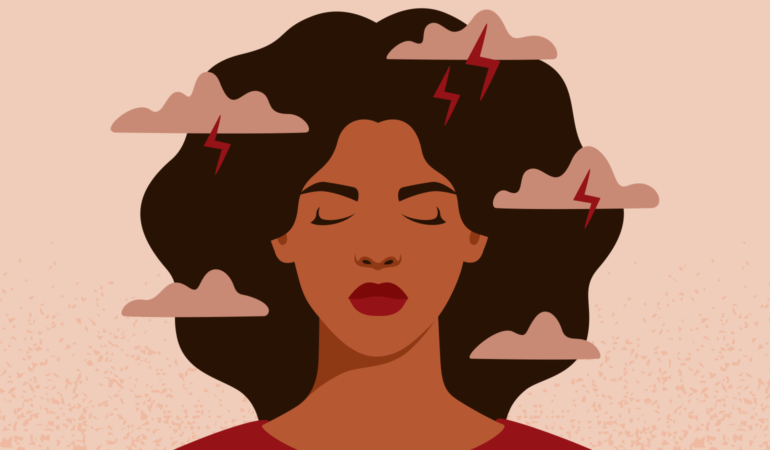Many people have asked me, “What is intimate partner violence (IPV) and why is it important to me if I don’t specialize in treating it?” IPV is a social ill that includes, but is not limited to, physical violence, emotional violence, psychological violence, and sexual violence. It is very likely that we have all known someone personally, or may have been involved in an IPV relationship ourselves, so it is important we know what IPV is and how prevalent it is—whether we assess for it or not!
It is reported that 25% of women experience IPV each year (Huecker, King, Jordan, & Smock, 2022). It is important to note that this statistic does not distinguish whether transgender and nonbinary individuals were included in the report. However, research has shown that transgender and nonbinary people are 1.7 times more likely than cisgender populations to experience any of the various forms of IPV, and are 2.5 times more likely to experience sexual violence (Peitzmeier et al., 2020).
I have yet to see a therapy case in which there is physical violence without emotional or psychological violence.
This article will focus on Black women in heterosexual and cisgender relationships, but it is imperative that we as a community understand that people in all forms of relationships can experience IPV independent of their gender identity and/or sexual orientation. Another gap in the extensive research on IPV is that a majority of the research is conducted with White populations, and thus, a statistic that is not often highlighted is the disproportionate rates of IPV experienced by Black women. Black women are 44% more likely to experience IPV compared to 35% of White women, and Black women are more likely to experience more severe and lethal forms of violence (Kelly, Spencer, Stith, & Beliard, 2020). But why? Why are Black women experiencing and dying from IPV at alarming rates? The answers to these questions are just as complex and nuanced as to why IPV is so prevalent.
The first question I get when people learn about these statistics is “What types of violence should I be screening for?” I have yet to see a therapy case in which there is physical violence without emotional or psychological violence. Survivors of IPV have reported, in research studies and anecdotally, that violence perpetuated towards them often escalates and intensifies over time. For many IPV survivors, the violence starts out as name calling, for example, and then over time physical and sexual violence are experienced in addition to verbal or emotional violence. If we think of the cycle of violence, as theorized by Dr. Lenore Walker (1979), it starts off with the honeymoon period. In this period, the relationship feels wonderful for both partners, and attention and affection are constant. However, these relational staples begin to wane over time. This leads to the buildup/tension phase. In the beginning of a relationship, this phase may look like increased relational tension (e.g., less affection, feeling rejected, miscommunications) without relational repair, but also without overt violence. However, as the length of relationship increases, violence often also increases, meaning that the tension phase could also then include emotional and psychological violence which may then lead to physical violence in the explosion stage. During the explosion stage, an overt act(s) of IPV occurs. Directly after the perpetration of violence, the honeymoon phase begins again. In this phase, I see many of my clients attempting to rationalize the abuse or gaslight themselves into thinking that the violence would never occur again. At the beginning, this cycle of violence starts off slow. Then, the more it is completed, the quicker it often becomes. I have seen clients who might go through this cycle numerous times a day, and when we reflect back to the start of the relationship, the time between phases of the cycle may have taken weeks or months before reaching the explosion stage.
The next question I get is, “Why Black women? Are you trying to imply that Black women are more likely than White women to be attracted to violent people?” And to that I reply, absolutely not. I want to make this extremely overt: Black women are not defective or more prone to being with violent people. The likelihood of Black women experiencing IPV is rooted in systemic racism and oppression. Systemic racism and oppression are key factors in the high levels of victimization of Black women due to societal assumptions and perceptions of Black women. Racist narratives position Black women as strong and resilient, thus not needing help or being able to be victimized. These societal narratives, rooted in racism and oppression, limit Black women’s access to resources through the likelihood of their experiences of IPV being dismissed. Black women often avoid seeking out help from formal agencies (e.g. mental health services, police, and legal aid) and more so rely on informal services (e.g. family members, coworkers, clergy) due to fears of rejection and not being believed, being subjected to further oppression such as being seen as ‘strong enough’ to fight back or deserving of the IPV, and fear of unjust treatment from police and the judicial system for themselves and their partners (Kelly, Spencer, Keilholtz, McAllister, & Stith, 2022). Further, because of these systemic implications, there is a higher likelihood that the cycle of IPV will continue to increase without any formal agency interventions which directly correlates to the higher levels of severe and lethal injuries. Because of Black women’s distrust of formal agencies, when reports are made, it is more often than not severe abuse (Kelly et al., 2022).
We must become more curious about systemic factors outside of and within the home to best support clients and provide safety within our offices so that Black women can trust that they are safe to disclose their experiences.
Which leads me to the next question I am asked: “What can I do as a clinician to help advocate for Black women?” As clinicians, we must look at our own biases and preconceived notions of what IPV looks like, who is impacted, and how IPV presents, and ask ourselves, “Are we creating the therapeutic space for our clients to disclose this information to us?” We also cannot ignore the correlations between anxiety, depression, and experiences of societal oppression. In a meta-analysis focused on assessing for risk markers for IPV victimization of Black women, posttraumatic stress symptoms and alcohol abuse were significantly stronger markers for Black women than they were for White women (Kelly et al., 2022). Therefore, we must become more curious about systemic factors outside of and within the home to best support clients and provide safety within our offices so that Black women can trust that they are safe to disclose their experiences. We also need to challenge our internalized biases and narratives of Black women’s strength and resiliency equating that Black women must save and protect themselves in isolation.
The following are common best practices I talk about with my supervisees regarding how to discuss and become more attuned to the intersections of race and IPV in the therapy room. When Black women disclose IPV to me and then follow up their disclosure by saying that they should have been or are strong enough to withstand IPV, one of my favorite questions to ask is, “When did you learn that you had to be that strong?” I find it yields deep and intentional reflections on microaggressions, systemic racism, and Toxic Black Femininity (the internalized and dominant message that, as a Black woman, one must be rigidly strong, hypersexual, and primary caregiver to all, before acknowledging or taking care of one’s own needs and desires (Kelly et al., 2020). It is also important to distinguish and understand that being Black is not the issue; the issue is systemic racism and oppression and the vilification of Blackness. For example, in a therapy session, this could look like a therapist questioning if their client felt that their boss’s condescending tone was racially motivated verses saying something like, “Well you are Black so that is why your boss is being condescending.” Another tip is to never assume that all Black people exist as a monolith. So, statements like, “All Black women feel that they are too strong,” might be well intentioned, but can further marginalize and stigmatize by assuming that all Black women have the same experiences with societal narratives about their strength. If you feel that you need more guidance and education on working with Black populations, then I strongly suggest attending AAMFT events that feature presentations from scholars who are experts in providing racially and culturally attuned therapy to Black populations and who center the voices of Black people in their scholarship, or seek out supervision from supervisors who are competent in this area. My deepest hope is that together we can help amplify the voices in the Black community on the specific needs and interventions needed to ensure a safer future for generations to come, because this isn’t just a Black issue … this is an all of us issue.

Lorin Kelly, PhD, LCMFT, LIMHP, CMFT, is an AAMFT Professional member holding the Approved Supervisor designation. She is a couple and family Therapist in Manhattan, Kansas.
REFERENCES
Huecker, M. R., King, K. C., Jordan, G. A., & Smock, W. (2022). Domestic violence. Treasure Island, FL: StatPearls Publishing.
Kelly, L. C., Spencer, C. M., Keilholtz, B., McAllister, P., & Stith, S. M. (2022). Is separate the new equal? A meta-analytic review of correlates of intimate partner violence victimization for Black and White women in the United States. Family Process, 00, 1– 16. https://doi.org/10.1111/famp.12754
Kelly, L. C., Spencer, C. M., Stith, S. M., & Beliard, C. (2020). I’m Black, I’m strong, and I need help: Toxic black femininity and intimate partner violence. Journal of Family Theory & Review, 12(1), 54-63. https://doi.org/10.1111/jftr.12358
Peitzmeier, S.M., Malik, M., Kattari, S. K., Marrow, E., Stephenson, R., Agénor, M., & Reisner, S. L. (2020). Intimate partner violence in transgender populations: Systematic review and meta-analysis of prevalence and correlates. American Journal of Public Health 110, e1-e14. https://doi.org/10.2105/AJPH.2020.305774
Walker, L. E. (1979). Battered women: A psychosociological study of domestic violence. Psychology of Women Quarterly, 4(1), 136-138. https://doi.org/10.1177/036168438000400101
Other articles
Effects of IPV on Immigrant Latinas
Intimate partner violence (IPV) is defined as domestic violence perpetuated by someone onto another person in an intimate relationship. IPV can take different forms, such as physical, verbal, sexual, or psychological abuse.
Jacqueline Florian, MA
Can Suicide Protocols Empower Clients? From Assessment to Assistance
The COVID-19 pandemic has skyrocketed the demand for mental health services in many locations, city and rural areas alike (Richtel, 2022). Experiences such as loss of loved ones, disappearance of jobs, derailing of social activities, isolation, depression, alienation, etc., have contributed to an increase in people thinking of the unthinkable: ending their lives.
M. N. Beaudoin, PhD
Intra-familial Homicide: Definitions and Descriptions
Americans may be at a greater risk of murder in their personal homes than in public places like parks or strolling down the streets in their cities. This is because family members have turned on each other with great lethality throughout history.
Jerrod Brown, PhD





